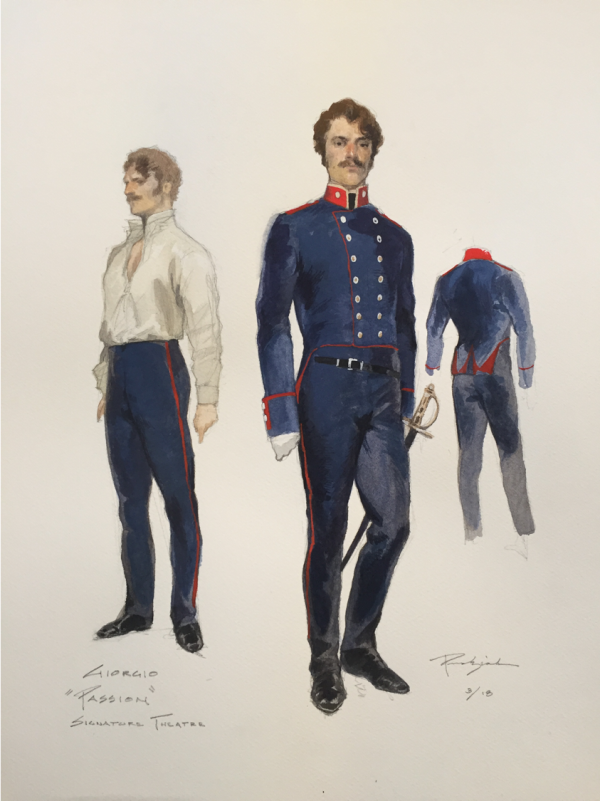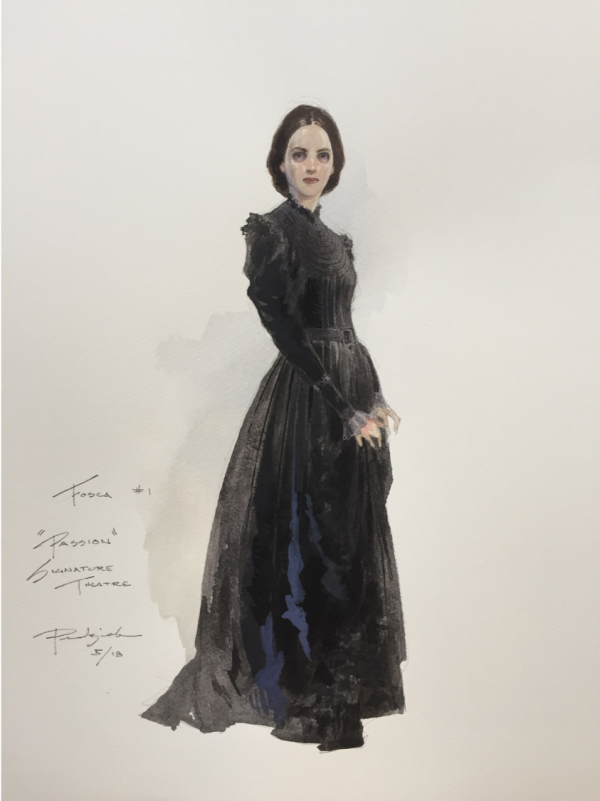Costume Designer Robert Perdziola's Design Process

Perdziola’s rendering for Giorgio’s costumes.
I think costumes are one of the design elements audiences notice most in a production. Certainly your design for Signature’s A Little Night Music was unforgettable—set in a luxurious world that told so much story through color and texture. How do you approach a show like Passion that is set in a world full of military uniforms and not as much luxury beyond the character of Clara?
Uniforms are always tricky and a challenge. It’s not always possible to make what you want from scratch. Your budget won’t support that. Even though this is a period piece with military, my military costumes are not true to period. It’s a musical. An American musical, set in mid 19th century Italy, with a military as a background. We are never really on the battlefield. We don’t witness a lot of fighting. We hear them sing about their regiment, their regulations. We are aware of sexual longings of three of the characters. My uniforms are more fitted, more abbreviated, more like trim cadet uniforms than true 19th century outfits. This is a conscious decision we made. The uniforms must show a formality, a regularity, a rigidity, and be a background to the piece.

Perdziola’s rendering for Fosca’s dress.
This is a period piece. The show also has two forward thinking women at its center. Are you looking to go for a purely authentic period look or are you doing a spin on it at all?
Tagging onto what I stated above, we have made a conscious effort to not be period exact even with the women. In true historical fashion, both Clara and Fosca would have worn hoops in addition to corsets and petticoats. I have done without those for this production. That’s not to say that Clara won’t have big dresses. But for Signature Theatre the look will have an essence of period arrived at through my own aesthetic. Clara will have a blue negligee that most certainly is not true period, but will evoke period. Fosca’s clothes might be described as deflated period, with the life taken out of them.